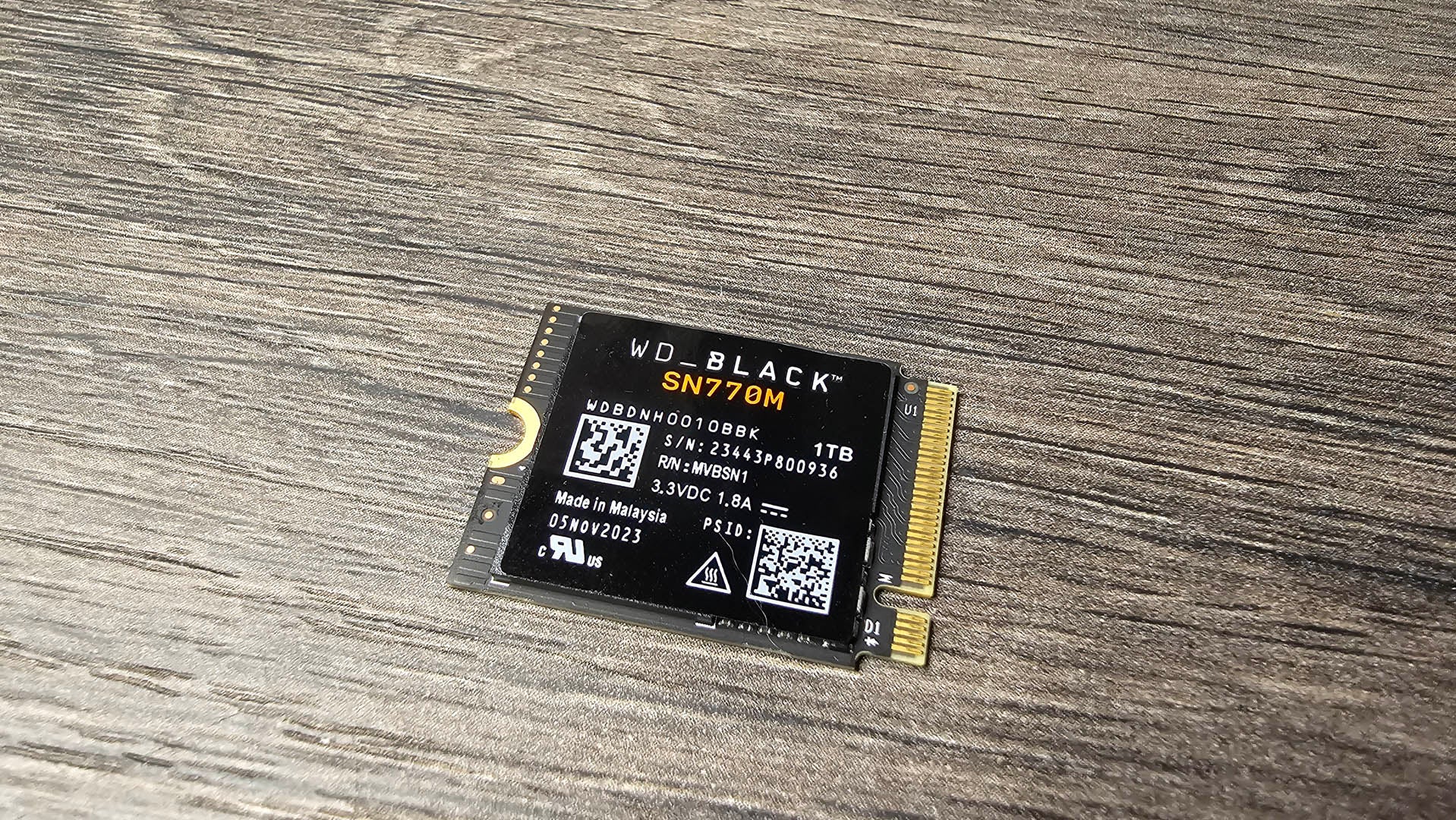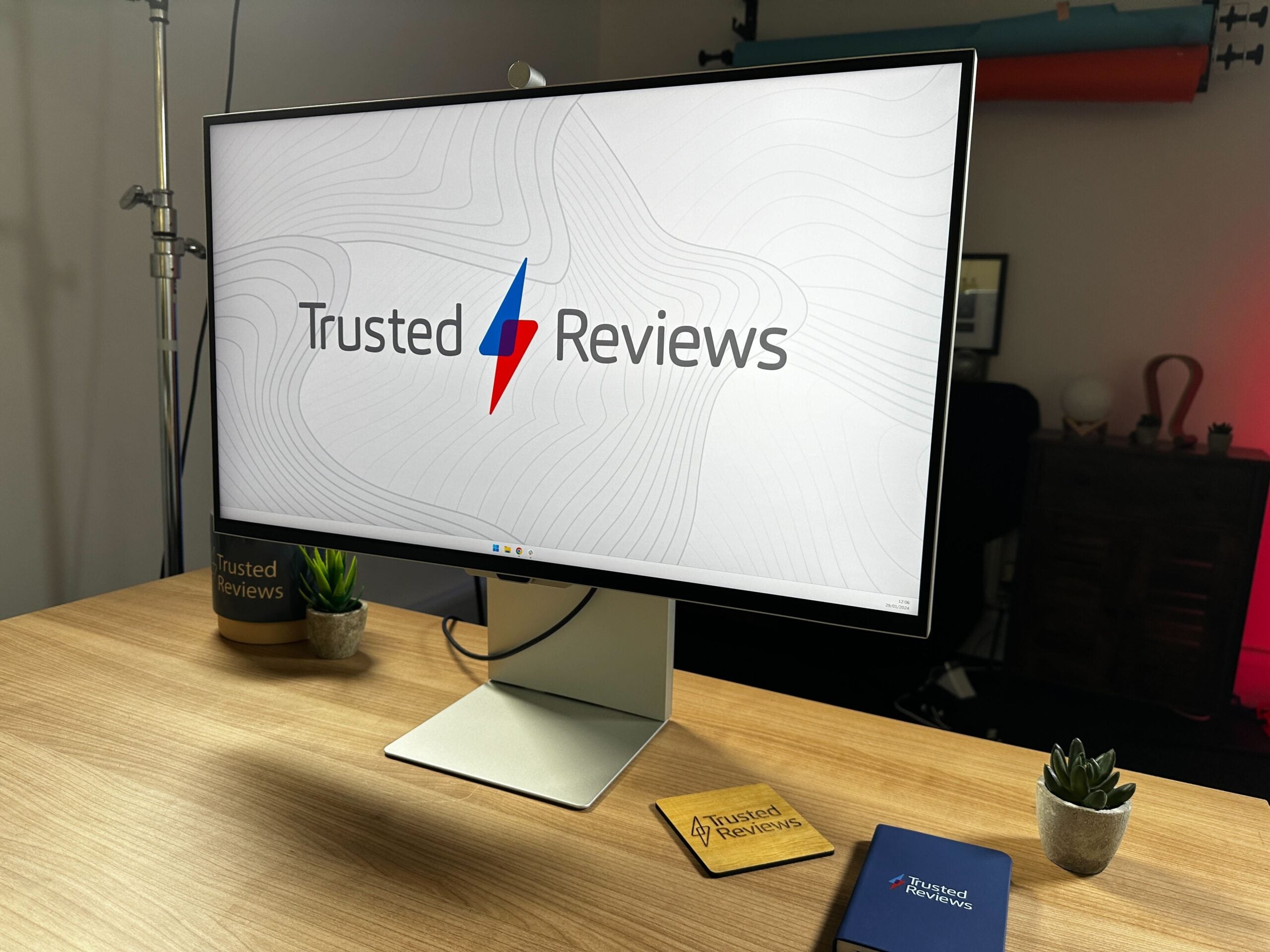Asus Zenbook 15 OLED (2023) Review
An impressive 15-inch OLED and AMD team-up






Verdict
With a speedy and versatile processor as well as a fantastic OLED screen, the Asus Zenbook 15 OLED (2023) is a great, lightweight laptop for every day. There’s scope for creative work and even low-demand gaming too.
Pros
- Superb OLED screen
- Fast Ryzen 7 CPU with integrated RDNA2 GPU
- Comfortable keyboard and accurate touchpad
- Excellent connectivity
Cons
- Battery life is good, not great
- Fan gets noisy at full tilt
Availability
- UKRRP: £1199
- USATBC
- EuropeTBC
- CanadaTBC
- AustraliaTBC
Key Features
- 15.6-inch OLED screenWith a QHD-plus resolution and stunning vibrant colours, this is a fantastic screen for image-editing, Netflix binges or anything else.
- Ryzen 7 7735U CPUThis power-efficient Ryzen CPU combines strong 8-core, 16-thread performance with a built-in RDNA2 GPU.
- Thin and light designWeighing in at just over 1.4Kg, this is a 15.6-inch laptop that you can cheerfully lug around all day.
Introduction
The latest version of the Asus Zenbook 15 OLED thin-and-light looks like another well-priced featherweight champ, packing in not only a superb OLED display but one of AMD’s latest Ryzen 7 CPUs.
The U in the Ryzen 7 7735U tells us this is one of AMD’s more power-efficient chips, with eight Zen3+ cores running sixteen threads and an RDNA2 GPU with 12CUs to handle the graphics. With a 50MHz boost over the old Ryzen 7 6800U, this is an exciting processor for thin and light devices, and Asus has fitted inside a rather lovely lightweight chassis. If you’re on the hunt for a big-screen ultraportable, should you be throwing your money Asus’s way?
Design and keyboard
- Slimline design gives you a 15.6-inch screen in a lightweight 1.4kg body
- Wide touchpad and great keyboard with a comfortable, light action
- Strong set of connections, along with Bluetooth 5.3 and Wi-Fi 6E
The Zenbook’s thin and light credentials are beyond question. Closed, it measures just 355 x 226mm and is only 15.8mm thick at its thickest point. At just a whisker over 1.4kg it’s lighter than Dell’s equivalent XPS 15 or the 14-inch Samsung Galaxy Book3 Pro. The build is all aluminium, bar the slimline bezel around the screen, and my test sample arrived in a fetching Ponder Blue finish, which is best described as a matte inky near-black.
Aluminium isn’t any guarantee of strength, but Asus knows what it’s doing with the Zenbook line, and there’s no undue flex in the base and only a little if you apply pressure to the corners of the lid.
The hinge stretches across most of the width and feels smooth yet impressively robust. The bottom is smooth with the vents firing downwards, and the only thing that mars the picture is some surprisingly rough edges where the aluminium plate of the keyboard surround folds over the base-plate on either side. These don’t affect comfort, but you can feel them if you’re carrying the Zenbook around.
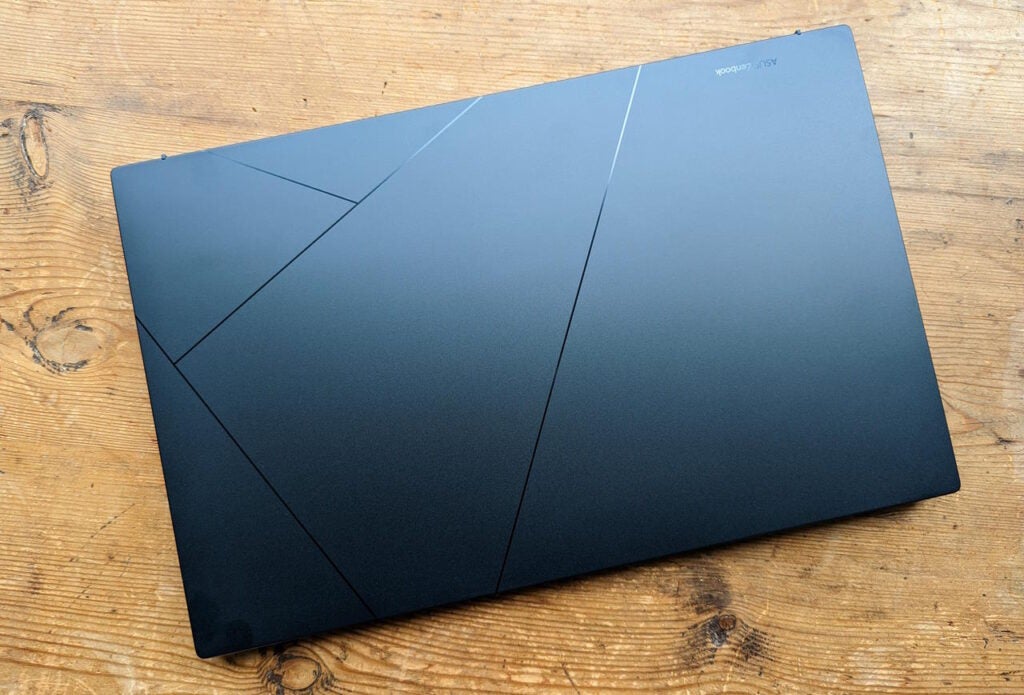
Most of the connectivity is on the right-hand edge, with one USB 3.2 Gen 2 Type-C, one USB 4.0 Gen 3 Type-C, a 3.5mm audio socket and an HDMI 2.1 out. Unless you really need Thunderbolt 4, that should cover all your basic needs, and there’s a single USB 3.2 Gen 1 Type-A port on the left-hand edge for dongles and that kind of thing. With Wi-Fi 6E and Bluetooth 5.3, wireless connectivity is about as cutting-edge as you might want.
One of the big pluses of a 15-inch ultraportable over the smaller, lighter 13 and 14-inch models is that you get space for a full-sized keyboard and a bigger touchpad too. So it goes with the Zenbook 15 OLED. I could quibble about the pint-sized Shift and Ctrl keys on the left-hand side or the split #/Enter key, but the layout takes barely any getting used to, and the action’s very likeable as well. It’s not exactly crisp or clicky, but keys have a couple of millimetres of travel and take just enough pressure to actuate, before bouncing back at speed. I spent quite a good few days writing with the Zenbook 15 OLED, and I’m going to miss the keyboard when it’s gone.
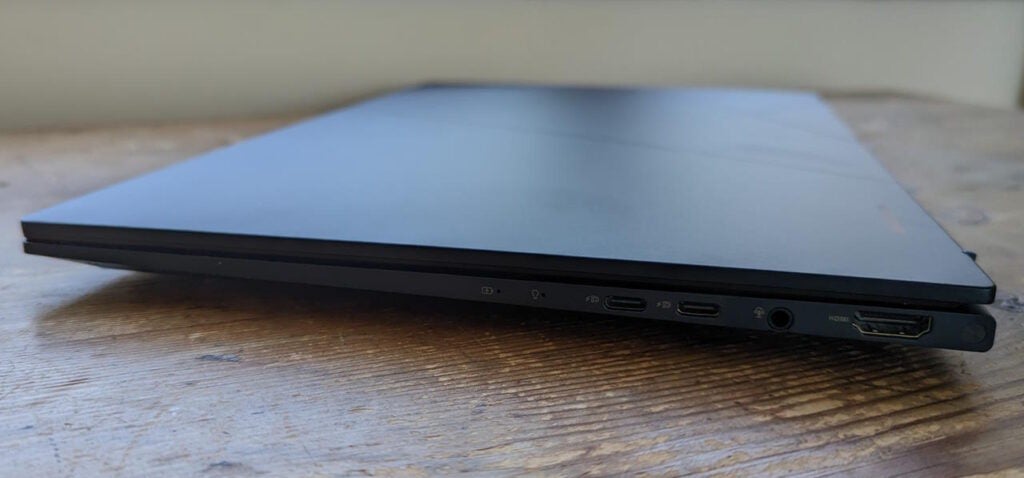
The touchpad is wider than the norm, at roughly 129mm, and 7.5mm deep. It’s got a fine, glassy smoothness and does a great job of tracking motion and gestures, which is important on a laptop that you may be using on the move, without a mouse to hand.
Screen
- 15.6-inch size and 2880 x 1602 resolution
- OLED panel goes bright and punchy, with near-100% DCI-P3 coverage
- Sound has more weight and depth than you might expect
If the design and construction are excellent, it’s the screen that’s the star of the show. The 15.6in, 120Hz OLED panel has an odd 2880 x 1602 resolution that’s just above QHD, meaning text and images look incredibly sharp. It’s bright, with a maximum 395.8 nits, and it covers 100% of sRGB and 99.7% of DCI-P3. As with all OLEDs, blacks are perfectly black, leading to insane Infinity:1 levels of contrast, and colours are as punchy as on an OLED TV; richly saturated without looking artificial.
What all this means is that the Zenbook 15 OLED is a treat for watching TV shows and movies, particularly anything with a bright colour palette, lots of detail and striking use of HDR. Trailers for The Flash and Spider-Man: Across the Spiderv-Verse looked spectacular, while I watched a surprising amount of John Wick 3 streaming in UHD.
The only thing to watch out for is that the brightness seems to shift occasionally, presumably due to some form of video processing, as adaptive brightness was turned off. With some content, this was a bit distracting, particularly in the quieter scenes of Tenet when I stopped to watch a chunk of that running on YouTube in the Edge browser. Generally, though, this isn’t an issue, and it didn’t crop up when streaming Netflix or playing games.
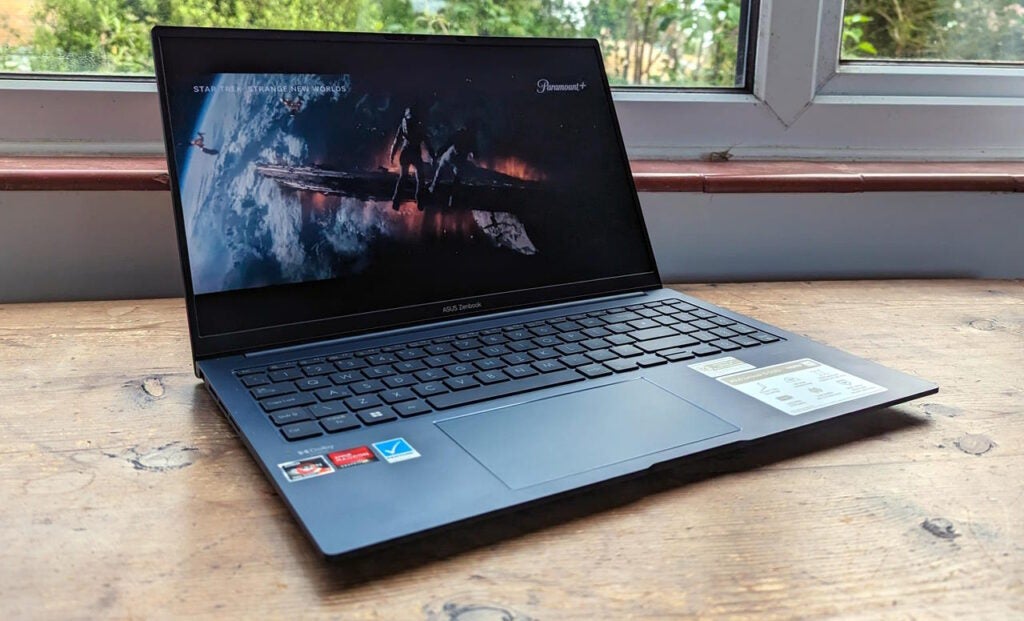
The other thing that helps make the Zenbook a great entertainer is the surprisingly effective sound. You won’t want to throw away your streaming speaker, but there’s plenty of weight and depth here, not to mention some immersive stereo and pseudo-surround effects.
Above the screen sits a webcam, complete with 3D capture for Windows Hello. Image quality is generally excellent, capturing high levels of detail with natural colours and a well-balanced exposure. Windows Hello sign-in is quick and close to flawless, signing me in with barely a hiccup during testing.
Performance
- Ryzen 7 CPU delivers great performance for everyday and creative apps
- Enough GPU horsepower to run games at low-to-medium detail settings
- You’ll still need a dedicated GPU to hit 60fps frame rates
Teamed with 16GB of dual-channel LPDDR5 RAM and a 512GB PCIe 4 SSD, the Ryzen 7 7735U turns out to be another competent and versatile performer, with a little more speed than the old Ryzen 7 6800U and more GPU horsepower than the equivalent Intel processors.
The results in Geekbench and PCMark 10 show that it’s still outclassed by the Core i7-12700H in the Dell XPS 15 (2022) or the i7-13700H in its sibling, the Asus Zenbook 14X, not to mention the latest Acer Swift 3 with its Core i7-1260P. Yet while its Geekbench scores are lower than the Acer Aspire 5, packing a Core i5-1235U, its scores in PC Mark 10 are higher.
In practice, Windows and day-to-day productivity applications feel snappy and responsive while in use, and there’s more than enough power to run fairly demanding creative apps. With the integrated Radeon 680 GPU, there’s also enough 3D performance for some lightweight 3D gaming.
You need to be realistic here: we’re talking low to medium settings at 1080p or medium to high at 720p with anything vaguely recent, with the frame rate closer to 30fps than 60fps. We couldn’t get Horizon Zero Dawn to even run at our usual 1080p Ultra benchmark settings, only with the Original setting and FSR upscaling turned on. Still, that got me to a perfectly playable 49fps. In Borderlands 3, the Zenbook 15 OLED could only stretch to 18.8fps at 1080p Ultra, and I had to switch to Medium settings to get a playable 37.53fps.
While the Zenbook seems to have an efficient cooling system, it can get loud when the CPU is being pushed hard, hitting quite a hard, whistling note when running the above games. It’s not unusual or terrible in this regard, but if you’re used to a near-silent laptop, it might come as a shock.
Battery
- Expect close to eight hours of use if you turn the brightness down
- Keep it turned up, and you can still get nearly seven hours of video streaming
Asus has crammed a 67Wh battery inside the chassis, and the resulting battery life is quite impressive for a 15.6-inch device. PC Mark 10’s Modern Office benchmark wore the battery down in eight hours and 48 minutes, beating the Dell XPS 15 and stablemate, the Asus Zenbook Pro 14 OLED.
If you’re watching video with the brightness turned up, you’re looking at roughly six hours and 50 minutes. We’ve seen better battery life from some big-screen laptops, like the LG Gram 16 (2022), but there’s still enough here to get you through a solid working day. I’m also pleased to see Asus supplying a USB-C PD charger rather than some proprietary adapter; more manufacturers should follow suit.
Latest deals
Should you buy it?
A top-notch 15-inch display with all-round productivity chops
This is a brilliant lightweight laptop with comfortable ergonomics and an excellent 15.6-inch screen. That makes it more flexible and versatile than some 13-to-14-inch models, while the Ryzen 7 CPU ensures that you get strong 2D performance and a modicum of 3D speed.
Not as ultra-portable as devices with smaller displays
It’s not quite as easy to cram in a bag as a smaller ultraportable, and it doesn’t have the power or the dedicated GPU of some 15.6-inch rivals. The big screen also comes at a cost to battery life, though not to the extent that it’s a major problem.
Final Thoughts
With its slender frame, light weight and beautiful OLED screen, the Zenbook 15 OLED is a laptop that’s going to please a lot of people. The ergonomics are rock solid and it’s a pleasure to use.
The Ryzen 7 processor gives you some 3D performance, but there’s still not enough for a games machine. You can look to this device’s more graphically-powerful stablemate, the Zenbook Pro 14 OLED (2023), for an added power boost.
More mobile users might want something slightly smaller and lighter, with better battery life, and Asus has you covered there too. The Zenbook S 13 OLED (2022) is excellent in that department, as are the HP Dragonfly Pro and Galaxy Book 3 Pro.
If graphical power and ultra-portability don’t worry you, buy away. This is a cracking thinner, lighter 15-incher.
How we test
Every laptop we review goes through a series of uniform checks designed to gauge key things including build quality, performance, screen quality and battery life.
These include formal synthetic benchmarks and scripted tests, plus a series of real-world checks, such as how well it runs popular apps.
We used as our main laptop for at least a week.
Tested the performance via both benchmark tests and real-world use.
We tested the screen with a colorimeter and real-world use.
We tested the battery with a benchmark test and real-world use.
FAQs
The Asus Zenbook 15 OLED does not have a touchscreen display.
The Asus Zenbook 15 OLED has a screen with a 120Hz refresh rate.


